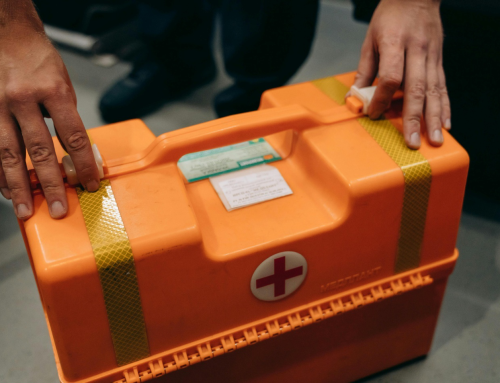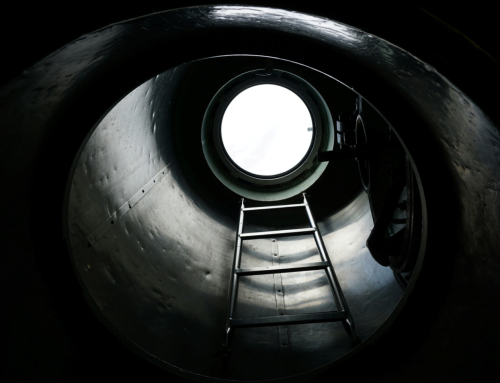Construction sites, bustling with activity and energy, are also home to potential hazards that demand vigilant attention.
Among these dangers, the threat of electric shock looms large. For construction workers, understanding and mastering shock treatment is not just a professional requirement; it is a life-saving skill. This in-depth guide explores the intricacies of shock treatment, providing construction workers with the knowledge and skills necessary to navigate the current safely and effectively.
Section 1: Understanding Electric Shock
1.1 Introduction to Electric Shock
Electric shock is a complex physiological response to the passage of electric current through the human body. Construction workers must grasp the fundamentals, including the different types of electric shock and the variables that influence its severity.
1.2 Causes of Electric Shock in Construction
Construction sites are rife with potential sources of electric shock, ranging from faulty wiring and damaged equipment to inadequate grounding. Understanding these causes is the first step in prevention and effective shock treatment.
Do not forget the importance of enrolling your workers in productive and effective OFA training, fall protection, and CPR training in Surrey.
1.3 Consequences of Electric Shock
The aftermath of an electric shock can be severe, encompassing a spectrum from minor injuries to life-threatening conditions. This section delves into the potential consequences of electric shock, underscoring the urgency of shock treatment and preventive strategies for construction workers.
Section 2: Shock Treatment Protocols
2.1 Occupational First Aid Level 1
Occupational First Aid Level 1 (OFA Level 1)in Surrey lays the foundation for effective shock treatment. Construction workers will gain insights into basic first aid techniques, CPR, and initial wound care—critical skills that can make a significant difference in the immediate aftermath of an electric shock incident.
2.2 Advanced Shock Treatment Techniques (OFA Level 2 and 3)
As the severity of electric shock incidents varies, so must the responder’s skills. Occupational First Aid Levels 2 and 3 introduce advanced shock treatment techniques, encompassing the management of multiple casualties, administration of oxygen therapy, and in-depth trauma care.
Immediate Strategies to Deal with Shock Incidents in Workers
Electric shock incidents demand swift and decisive action to minimize the impact on the injured individual and enhance the chances of a successful recovery. Here are five immediate strategies to deal with shock incidents in workers:
1. Assess the Safety of the Surroundings:
The first step is to ensure the safety of the surroundings. Before approaching the injured worker, assess the area for potential electrical hazards. If the worker is still in contact with a live electrical source, it is crucial to eliminate the source of electricity by shutting off the power or removing the worker from the hazard using non-conductive materials.
2. Call for Professional Medical Assistance:
In cases of electric shock, it is imperative to call for professional medical assistance immediately. Electric shock can cause internal injuries that may not be immediately apparent. Emergency medical professionals are equipped to provide advanced care and can transport the injured worker to a medical facility promptly. You must also consider Metro Safety Training’s OFA training and Occupational First Aid Level 3 and Occupational First Aid Level 3 Pro Renewal in Surrey for maximum workplace safety.
3. Conduct a Primary Assessment:
Once the scene is safe and professional help is on the way, conduct a primary assessment of the injured worker. Check for responsiveness, breathing, and circulation. If the worker is unconscious but breathing, place them in the recovery position to maintain an open airway. If there is no breathing, start cardiopulmonary resuscitation (CPR) immediately.
4. Provide Basic First Aid:
While waiting for professional medical assistance, administer basic first aid to the injured worker. This may include applying sterile dressings to burns, covering open wounds, and providing comfort and reassurance. It is essential to avoid moving the worker unnecessarily, especially if there is a suspicion of spinal injury unless it is necessary for their immediate safety.
5. Monitor Vital Signs:
Continuously monitor the vital signs of the injured worker. Check for signs of shock, such as pale or bluish skin, rapid breathing, or a weak pulse. Keep the workers warm by covering them with a blanket, but avoid overheating. If the worker becomes unresponsive and stops breathing, be prepared to initiate CPR until professional medical help arrives.
Section 3: Mitigating Electric Shock Risks
3.1 Fall Protection Courses
Construction sites often present not only electrical hazards but also fall risks. This part emphasizes the importance of fall protection courses for construction workers. Proper fall protection not only prevents falls but also minimizes the risk of electric shock associated with these accidents.
3.2 Confined Space Safety
Construction workers may find themselves working in confined spaces where electrical hazards intensify. This section explores the relevance of confined space safety training, addressing the unique challenges of electric shock treatment in enclosed environments. Workers will learn how to navigate confined spaces safely while being prepared to respond to electric shock incidents.
Section 4: Emergency Response Strategies
4.1 Immediate Response Protocols
In the critical moments following an electric shock incident, time is of the essence. This section outlines immediate response protocols, guiding construction workers through the steps they should take to mitigate the impact on the injured individual effectively.
4.2 Communication and Coordination
Effective communication is paramount in emergency response situations. Construction teams must coordinate seamlessly to provide swift and cohesive assistance. This part of the guide discusses communication strategies and coordination techniques, ensuring that construction teams respond effectively to electric shock incidents.
Why Shock Accidents Occur at Construction Sites
Electric shock accidents at construction sites are often rooted in a combination of factors, making it crucial to understand the contributing elements. Here are key reasons why these incidents occur:
Wiring and Electrical Systems
Outdated or faulty wiring and electrical systems are primary culprits behind shock accidents. Construction sites typically involve a maze of temporary electrical installations, and if these are improperly installed or maintained, the risk of electric shock escalates.
Equipment Malfunctions
The diverse array of heavy machinery used in construction poses a significant risk if not adequately maintained. Malfunctions in equipment, such as power tools, cranes, or generators, can lead to electric shock accidents when workers come into contact with faulty components.
Lack of Grounding
Proper grounding is essential to ensure that electrical currents have a safe path to follow. Inadequate grounding increases the risk of electric shock. Construction sites, with their dynamic nature and frequent reconfigurations, may inadvertently compromise grounding systems.
Exposed Wiring and Conductive Materials
Exposed wiring or improperly insulated conductive materials present immediate hazards. Construction workers may inadvertently come into contact with live wires or surfaces, leading to electric shock. The hurried pace of construction projects can contribute to oversights in securing and insulating electrical elements.
Inclement Weather Conditions
Construction sites operate in various weather conditions, and rain or high humidity can elevate the risk of electric shock. Moisture can compromise insulation and create conductive paths for electricity, heightening the danger for workers.
Mechanisms of Shock Accidents
Understanding the mechanisms behind shock accidents at construction sites provides insight into how these incidents unfold:
Direct Contact with Live Wires
One of the most direct causes of shock accidents is direct contact with live wires. This can occur when workers handle wiring without proper insulation or when electrical systems are improperly installed or maintained.
Equipment-Related Accidents
Malfunctions in power tools or other construction equipment can lead to shock accidents. Workers using faulty equipment may experience electrical shocks, especially if the malfunction involves exposed wiring or defective insulation.
Contact with Conductive Materials
Construction sites often involve the use of metal scaffolding, structural components, or machinery. If these elements become energized due to faulty wiring or electrical malfunctions, workers can experience shock by coming into contact with conductive materials.
Arc Flash Incidents
Arc flash incidents involve the release of intense heat and light due to a short circuit. These events can cause severe burns and injuries to workers in close proximity. The sudden release of energy in an arc flash is a hazardous mechanism that can lead to electric shock.
Impact of Shock Accidents
Shock accidents can have profound and far-reaching consequences, affecting both the individuals involved and the overall safety culture of a construction site:
Injuries and Health Impacts
The immediate impact of an electric shock includes injuries ranging from burns and muscle contractions to more severe consequences like cardiac arrest. Additionally, the psychological impact on the affected workers can be substantial.
Fatalities
In the worst-case scenario, electric shock accidents can result in fatalities. The high voltage present in many construction site electrical systems poses a grave risk, and fatalities may occur if immediate intervention and first aid are not administered.
Worksite Disruptions
Shock accidents can disrupt construction projects, leading to delays, investigations, and potential legal ramifications. This can significantly impact project timelines, budgets, and the overall efficiency of the construction site.
Reputation and Liability
Construction companies may face damage to their reputation and legal liabilities in the aftermath of a shock accident. Ensuring a safe work environment is not only a moral obligation but also crucial for protecting the interests of the company.
Contact us today to schedule training sessions and enhance the safety culture on your construction site.










